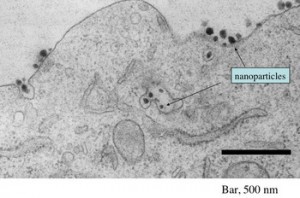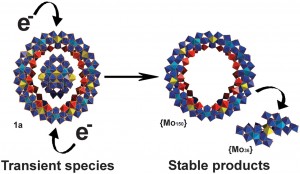I’ve been at the Science, Engineering and Innovation summit at the Royal Society this evening. This was an attempt to build on the reports on science and innovation published before the election (as discussed my last post) with the new government. It was a packed meeting, involving just about anyone in the UK with any interest in science policy. Here are my notes, as taken at the meeting. My apologies for any inaccuracies, and to anyone in the questions whose name I didn’t catch.
Martin Rees welcomes a packed audience – David Willetts is late.
James Wilsdon takes the chair.
Aims – an opportunity for the new minister to set out the direction of travel in the new spending round, and to make sure the weighty set of reports published before the election are not forgotten about.
Martin Taylor – (Chair, The Scientific Century)
The recent election saw science with a higher profile than usual, partly as a result of the many reports we’re talking about it. Of course science was still marginal, but our key arguments did register. This is partly because of the uncertainty we’re in – we anticipate tempestuous times. The next spending review will be the most important for a generation, setting national finances on an even keel but setting the tone for many years to come. There is a lot that unites the flurry of reports about science we’re talking about – one common theme is the need for stability. Three big themes in the Scientific Century. 1. Science and Innovation must be at the heart of any strategy for economic growth. 2. UK science is a marvellous asset for the UK, but there is a new global competitive environment for science, with major new investments in France, USA and elsewhere. 3. If we don’t continue to invest, we’ll lose our place at science’s top table.
We must show the new government how science and engineering can help the government both overcome immediate challenges and their long term aspirations. There will be difficult decisions ahead – the Royal Society is ready to offer help and advice. But short-term decisions must not undermine the ability of science to help meet the long term global challenges we face, and the health of the nation.
John Browne (President of Royal Academy of Engineering, ex CEO of BP, author of forthcoming Browne review into the financing of higher education).
What can be done to retool the British economy for growth and innovation? We’re the worlds 6th biggest manufacturer, with leading areas in sattelietes, aerospace, pharmaceuticals and design led manufacturing. But we don’t always turn ideas into business. Decisions about budget cuts must be made with an eye on the future. Businesses remain the main vehicle for wealth creation, but governments can help. This isn’t about picking winners, but supporting strategic sectors. Seven areas should be concentrated on:
1. ensuring we have the people with the right skills
2. keeping ideas flowing by funding the best researchers – then a debate about what other research we can afford
3. systems to bridge the gap between science and the market
4. stable environment with stable regulatory framework
5. incentives for small and large companies
6. government’s influence as a customer, with public procurement used as a tool for innovation
7. all the above to be put into a coherent framework, measured and assessed
Government doesn’t have to do everything – national academies, professsional scoeities etc. are ready to help.
We must all take a firmer lead to communicate the excitement of science and engineering and the careers it leads to.
Janet FInch – (Chair, CST Vision for UK research)
The CST report had one headline message – the UK’s research is a great success story but it’s under threat because of global competition. This is the most important message, for the scientific community, to government and to business. The “Rising above the gathering storm” report from the USA made this point strongly in the US context, emphasising the growing importance of China. So the UK’s strong position has been admirable for last decade but we can’t assume it will stay there. What we need to do is:
1. Government should adopt a clear long term vision – we need stable policy and stable policy directions – particularly to encourage private sector investment. In the current environment attracting private sector investment is going to be crucial, but we need government funding for upstream research, creative discovery based research across a range of disciplines (including social sciences).
2. We need to invest in people is important, more than projects. This includes both home grown people and attracting the best from abroad. We can’t predict the future, but if we have the best people they will adapt and respond to new challenges as they arise.
3. We need an ambitious innovation strategy which is directed at major global and social challenges. There need to be more incentives for collaboration, both in the UK and internationally. OUr highly competitive funding environment has served us well, but we need to balance competition with collaboration. This country is always going to be small compared to major world economies so we need to bring people together.
Hermann Hauser (Amadeus Capital Partners, author of Hauser review)
Let me make the case for Maxwell centres. The UK is second only to the USA in producing quality papers, in in papers per pound we’re number one. But we don’t use this excellence in research well to make new companies and to make our large companies more successful. It used to be the case that researchers produced papers, then industrial scientists read them and a few years later might do something with them. But things aren’t so leisurely any more, and it’s a race to commercialise new ideas. The Americans are derogatory about Europe using too much state support, but DARPA is a gigantic government support mechanism for Silicon valley. ITRI in Taiwan, the Fraunhofers in Germany, and others have all created new industries and supported existing ones. Fraunhofers have funding split 1/3 state, 1/3 private sector, 1/3 project based, and this is a good template.
In what areas should we establish a few such centres in the UK? Three criteria:
1. market size billions to 10’s of billions
2. demonstrable academic lead
3. a plan to keep most of the value in the UK – though we do need to recognise that in a global environment there will be international partners.
We should set up a small number of such centres, each funded at a level of 100 million over ten years, and we should support them with government procurement.
(David Willetts arrives)
Iain Gray (CEO, Technology Strategy Board)
A thought inspired by the portrait of Darwin: It’s not the strongest species that survives, nor the most intelligent, but the one can adapt to change.
Science and research produces the ideas for the future, and the exploitation of these ideas produces the innovation that provides economic growth. Innovation is the key to recovering from the recession, and many countries across the world are investing heavily in this area.
Key points – the TSB budget is tiny compared to the government procurement budget – this is a huge opportunity for driving innovation. The low carbon vehicle program is an exemplar of somewhere where strategic investment can help overcome some of the big challenges society is going to face. Nissan’s investment in the UK was because of the science budget and the support for innovation. Other examples of strong businesses – the Satellite business, with new business models. Ceres power, through support in innovation got a key contract with British Gas. Innovation is crucial to economic growth. Regenerative medicine could be a game-changer for UK plc.
We need to provide the right ammunition to get the arguments across that innovation is what’s needed for the short and long term growth of the UK economy.
Helga Nowotny (President, European Research Council)
Research – Innovation – Education: the knowledge triangle is still valid, but we see some adjustments taking place. Innovation becomes the flagship of the plans for Europe – but Europe needs changes to increase the speed with which discoveries are taken to market. We know how to do this. We need
1. the spirit of entrepreneurship both inside and outside academia – intellectual property, venture captial, and public procurement. Less often talked about: every technological innovaiton needs social innovation. Not all innovaiton is based on research. But the kinds of innovation that will take us further are science based. As de Gennes has said, “By improving the candle, we are not going to invent electricity”.
2. So to research – the ERC will continue to be driven by excellence, bottom-up approach, the researchers know best. The UK is very successful in the ERC – the UK is a winner, but so is Europe, because this develops healthy competition and a raising of standards of evaluation right across Europe. The ERC trusts in people and their talents – but we need the third arm of the triangle.
3. Education begins long before the University. Many countries have a leaky pipeline of talented youngsters, so in the national context this pipeline should be fixed.
We hear a great deal about the grand challenges, of energy, climate, etc. There is one grand challenge that needs to be addressed first – how to integrate the three arms of the knowledge triangle.
David Willetts (Minister for Science and Higher Education)
I think fondly of a visit to the RS a couple of years ago when Martin Rees let me handle first editions of Principia and Origin of Species. This is the excitement of science which we should never forget. I’m not the only minister here – Pauline Neville-Jones (Minister for Security) is also in the audience.
I have dual responsibility for Universities and Science – I think this is a very exciting connection. What does this imply for dual support system? Firstly it means there is clear responsibility – the research councils can’t pass off responsibility to HEFCE, and vice versa.
Impact – Martin Rees is eloquent on some of these issues. Most academics do hope for and aspire to work that has an impact – researchers in medicine want to make a drug that will save lives, if you are a historian you hope your work will change the percpetions of the nation. The issue, then, isn’t impact per se – we all agree that research needs impact, but the “impact agenda”. I am wary of clunky attempts to measure and fund impact through the REF, and the impact agenda needs to be methodologically sound and commands widespread research. Blue skies research is still very important.
Innovation – this is often wrongly reduced to R&D. Coming from Birmingham, I start with Joseph Priestley and the Lunar Society. I would like to apologise retrospectively for the Tory riots in 1792 that burnt his house down! He discovered oxygen, but Lavoisier created the theoretical understanding, and the Swiss man Schweppes that made money out of it! I find the concept of the cluster a valuable way of thinking how innovation arises, much better than the sausage machine idea where science goes in one end and innovation comes out the other. We need low risk environments for doing high risk ventures. One idea for strengthening the cluster agenda is the idea of reproducing the Fraunhofers – I am struck by the similarity of Hauser and Dyson recommendations. Of course money is tight and some people will say you shouldn’t be thinking about making new institutions, but this is a very important area that I will be studying carefully.
Universities – Browne’s report on making the sector financially sustainable is very important , and the European agenda is very important here. Important arguments in Landes’s book – “The Wealth and Poverty of Nations” – point to the diversity of Europe compared to the monolithic nature of China as important in promoting innovation in Europe. Looking at the UK’s Nobel prize winners, so many of them had a moment of crisis or disjunction, moving disciplines or moving cultures. These shocks can create true intellectual greatness.
Questions now:
Imran Khan CASE – two key messages – it would be a false economy to cut support for science now, and we need a long-term plan
Someone from Imperial – medical research will die unless we pare back regulation
Alan Thorpe (CEO, NERC) – There’s much evidence on the economic benefits to the UK show factors like 15 in returns to the economy, many case studies on innovation deriving from fundamental research. Research Councils are proud of their “excellence with impact” theme. Is our evidence persuasive? What else should we do?
David Willetts – the evidence is powerfully set out. The absorbtive capacity of the economy allows you to benefit from advances around the world. There is a cash constraint, and that means that some things that are desirable are not affordalbe. I will make the argumetns about the role of science in the economy and civilisation. But I won’t be a shop steward – I understand the argumetns ane will do my best to convey them. I am here to learn from the panellists, and to serve this community.
Martin Taylor. Please put science and innovation at the heart of you plans for the economy – the figures for foreign investment, money coming in with foreign students. Please develop a plan for science that has ambition and vision, and give them stability.
Mary Phillips, UCL. Pleasing to see the role of social sciences highlighted – Ss and arts and humanities shouldn’t be neglected.
David Cope, POST. You emphasised diversity at the European level. But you can scale this down to the national level. Diversity is important, but this is in tension with concentrating resources on
James Woodhouse. You were much less robotic than your predecessors – would you favour research on robots in the home and the hospital. What is your attitude to nuclear power, and will you spend more money on carbon capture.
ANO. Food security – estimates that we will need lots more food, but I don’t see a new green revoution on the way,
DW. A common thread through these questions – the argument of John Beddington that there are a set of global challenges from which we are not exempt. We are dumping serious problems on the next generation (see the Pinch!) but we have a repairing lease on the planet. The resource that scientists offer is invaluable. We must revisit agricultural research, energy is crucial, robotics – Japan is instructive as robots seem to be their solution to the ageing population. And social science is very important – these challenges are about human behaviour. And I won’t say anything in the middle of a spending review about allocations to different institutions!
Janet Finch. The global challenges are getting much more severe; as China and India grow, we need to see much more collaboration between universities and this is much more important than having a debate about concentrating funding.
John Browne. The review on HE is taking public evidence this week – one question is trying to understand the difference between a set of world class institutions and a world class system. Carbon capture and storage will be debated for too long and action will be smaller than we expect. It’s a possibility but as cost and scale mounts alternatives will intervene. The discovery of unconventional natural gas will defer the need for CCS.
Hermann Hauser. You should have as much diversity as possible when it comes to blue sky research, but for exploitation there are only a few sectors in which the UK can be world-class.
Mark Walport. When times get tight the temptation is to slash and burn. we must maintain excellence at critical mass. we need a stable poslicty enviornment if industry is going to innovate. With all hte talk of big society, you don’t have a stable environmnet – that needs strong central
Chi Onwurah (Labour MP for Newcastle Central). I am a chartered engineer, Parliament at least is the most diverse environment I have worked in, having been a (black, female) engineer for the last 20 years. We need to attract a very wide range of people into science. How can we attract less well-off people to professional jobs like this?
Joyce Tait (Edinburgh) Enormous opportunities for innovation in life sciences if we can adapt the regulatory environment – a small change in the regulatory system could yield big benefits.
Helga Nowotny. Diversity is a source of creativity. But as Hermann says you have to look at what stage you mean. But diversity can turn into fragmentation. We need more gender diversity – more women in science and those we have don’t leave. we have a majority of female students, but many leave as the postdoc lifestyle demands mobility and insecurity inconsistent with family life. Too much measurement means that people become cynical and learn the rules of the game, at the expense of creativity. For the ERC we see a growing number of applicants. 14% is the fraction of women professors/advanced grant holders, but things are better for younger women.
Iain Gray. The Big Bang science fair brought many underprivileged children to be involved in Manchester. Regulation is a hugely important area. Maybe there are some special factors in Scotland we could look at.
DW. Stable policy environment – we are trying to operate on the basis of a strong coalition government to last five years. The PM made it clear that he didn’t want to reorganise Whitehall – so we have an opportunity to provide stability. I agree about diversity. On regulation, let’s have some concrete proposals. Many exciting discussions about the difference between risk and hazard and the regulation thereof remain!


